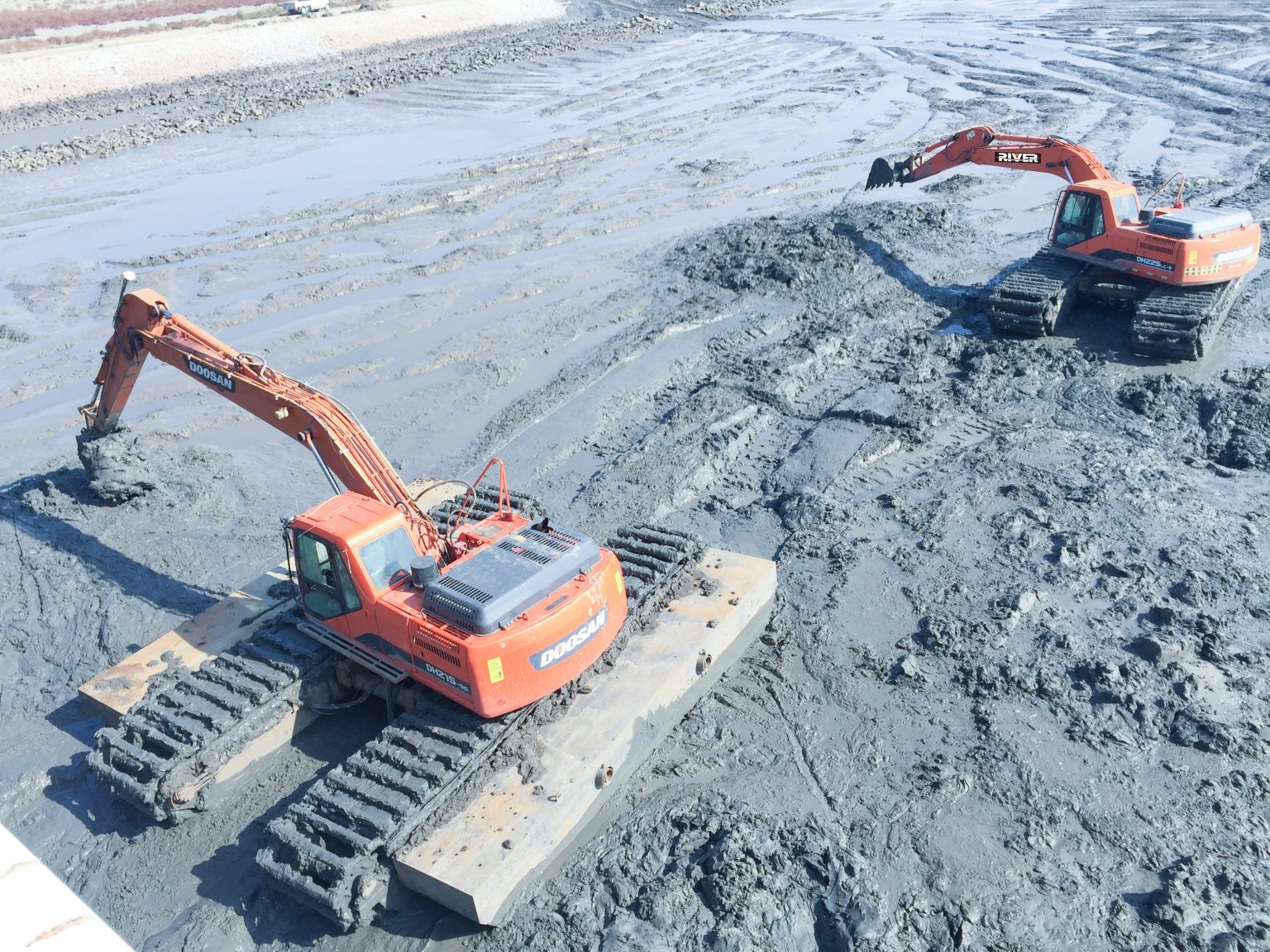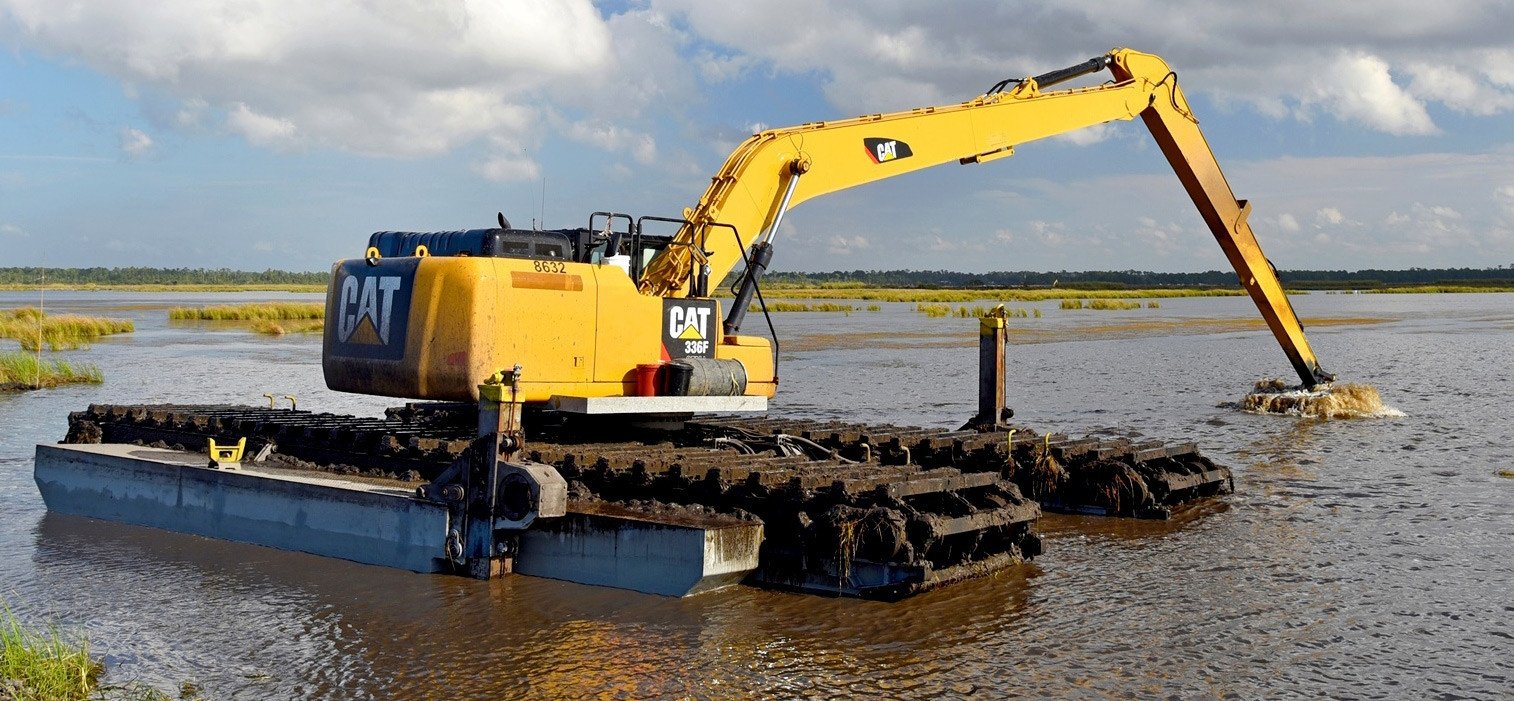What is Amphibious Excavator?
An amphibious excavator, also called as the swamp buggy, is an excavator equipped with a sealed floating pontoon as its undercarriage, which can be used for dredging operations in shallow water. The pontoon is made of high strength steel, resistant to corrosion and sea water. This ensures that the machine can work under the most demanding conditions. The amphibious excavator uses hydraulic power to drive its caterpillar system.
The swarmp buggy’s pontoon undercarriage is one of the latest industrial equipment innovations in the world. These excavators can operate on rugged wetlands around the world. In the past, engineers had to create solid ground for land diggers by building roads or bringing in barges through canals. To reduce the overhead costs involved in wetland industrial pump applications, engineers developed this amphibious system. The amphibious pontoon undercarriage can be mounted on excavators and other heavy equipment, making it buoyant and able to work in wet conditions without the need for additional construction.
This amphibious equipment is ideal for safely transporting workers and equipment to work sites over terrain that is too soft to walk and too dense to float. Previously, these industrial projects required workers to build canals, roads or platforms before operating heavy equipment in swamps and wetlands. That process is time-consuming, expensive and potentially damaging to the local environment. However, these roads and canals are necessary to support large machinery on soft or wet ground. With the support of amphibious excavator, the machinery can be driven directly to the site, which can save many processes.

Amphibious excavator Industrial Application
Common sense shows that amphibious excavators are mostly used in the vast wetlands and other water-rich areas in the south, and there are many situations where amphibious equipment can be effectively used. Projects around coasts, riverbeds and recent floods are good places to save money by using the swamp buggy. It can operate efficiently in a wide range of applications, including flood and disaster recovery work, dredging, environmental remediation and a variety of construction projects, such as laying pipelines, levees or highways.
Amphibious excavators are also the best choice for environmental dredging. River dredging is often hampered by shallow water depth because excavators can easily get stuck or have limited range. Because the swarmp buggy can either float in the water or drive on land, the operators don’t have to worry about getting too close or too far from the water’s edge. Wide track and low weight result in less ground pressure, while heavier equipment creates deeper track ruts. In addition, the ability to install the dredge pump directly onto the excavator enables optimal mobility and productivity.

